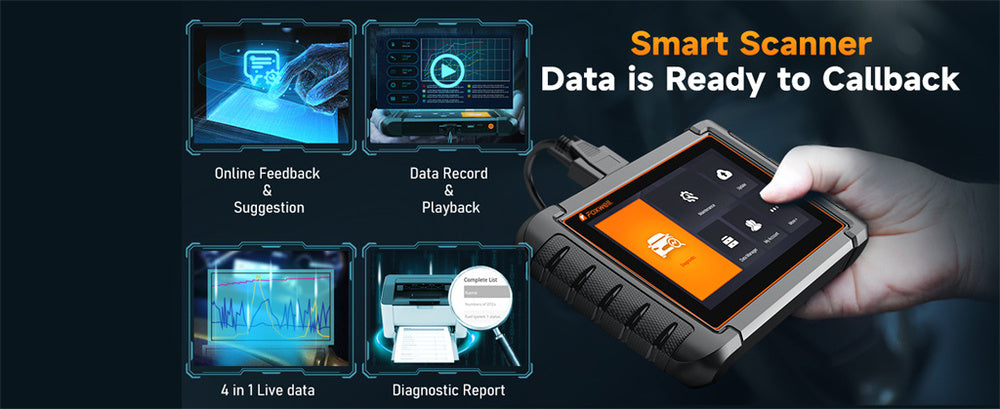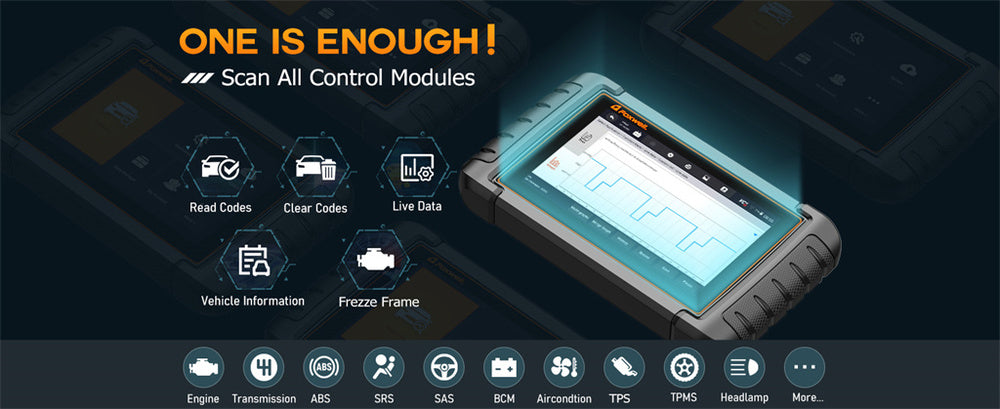Many drivers and DIY enthusiasts often wonder just how much insight their OBD2 scanners can provide when it comes to diagnosing electrical problems in their vehicles.
This curiosity stems from facing unexpected electrical issues—like battery failures or alternator problems—that aren’t always easy to pinpoint.
Understanding whether your scanner can truly help, or if a more advanced tool is needed, is crucial.
We'll delve into the role of OBD2 scanners in reading electrical systems, the types of issues they can identify, and the best tools for accurate diagnostics.
Understanding the OBD2 Scanner’s Capabilities in Reading Electrical Systems
So, you're curious if your trusty OBD2 scanner can read your car’s electrical system, huh? That’s a great question and something many car owners wonder about.
The simple answer is: yes, but with some caveats. Most basic OBD2 scanners are designed to read engine and emissions-related codes.
They’re like the doctor you go to for a regular checkup—great for common issues, but not necessarily equipped to handle specialized problems.
When it comes to the electrical system, things get a bit more complex.
While many OBD2 scanners can detect issues related to the battery or alternator, not all of them can dive deep into the electrical components like sensors, wiring, or the car's intricate electronic systems.
For that, you might need a more advanced scanner. Think of it like needing a specialist when your regular doctor finds something unusual during a routine checkup.
How OBD2 Scanners Detect and Monitor Electrical System Issues
Now, let’s talk about how these scanners work their magic with the electrical system.
An OBD2 scanner connects to your car's onboard computer and reads trouble codes that the system generates when something’s off.
For electrical issues, these codes can be a bit like clues in a mystery novel. They point you in the right direction but might not tell you everything you need to know.
For example, if there’s an issue with your battery or alternator, the scanner can give you a code that suggests something’s up with the charging system.
It’s like getting a heads-up that your battery might be running low or your alternator isn’t charging properly. Some scanners can also read voltage levels directly, which helps you keep tabs on your battery’s health.
However, not all electrical problems trigger a trouble code.
If you’ve got a more obscure issue, like a bad ground wire or a faulty sensor that doesn’t directly affect emissions or engine performance, a basic scanner might miss it.
This is where those more advanced models come into play.
Common Electrical System Fault Codes Read by OBD2 Scanners
So, what kind of electrical system issues can your OBD2 scanner actually detect? Let’s break it down with a few common fault codes that might pop up.
- P0562: System Voltage Low - This code means your car’s voltage is running low, likely due to a problem with the alternator or battery. It’s like your car’s way of saying it’s running out of juice.
- P0563: System Voltage High - The opposite of P0562, this code suggests that the voltage is too high, which could mean the alternator is overcharging the battery.
- P0620: Generator Control Circuit Malfunction - This one’s a bit more specific. It points to an issue with the generator (another name for the alternator) control circuit. It’s like a red flag for your car’s charging system.
- P2503: Charging System Voltage Low - This is another code that indicates low voltage in the charging system, but it can also hint at wiring issues or a weak battery.
These codes are just the tip of the iceberg. They give you a good starting point, but remember—they’re just part of the puzzle.
The real work comes in diagnosing what’s causing these codes to appear.
Choosing the Right OBD2 Scanner for Comprehensive Electrical System Diagnostics
Alright, now that you know what’s possible, let’s talk about picking the right tool for the job. Not all OBD2 scanners are created equal.
If you’re serious about diagnosing electrical issues, you’ll want to look for a scanner with enhanced diagnostic capabilities.
Basic scanners are like a Swiss Army knife—handy and versatile, but not the best for specialized tasks.
For deeper electrical diagnostics, consider a more advanced model that can read live data, monitor voltage, and provide manufacturer-specific codes. These scanners are more like a fully-equipped toolbox, ready for any situation.
Also, look for scanners that can communicate with all of your car’s systems, not just the engine.
This means they can tap into the ABS, airbag, and, yes, the electrical systems. While these models might cost a bit more, they’re worth it if you want to keep your car in top shape.
Tips for Using OBD2 Scanners to Diagnose Electrical System Problems

Using an OBD2 scanner to troubleshoot your car’s electrical system isn’t rocket science, but a few tips can make the process smoother.
- Start with the basics: Always check the battery and alternator first. These are the most common culprits in electrical issues.
- Use live data: If your scanner supports it, check the live data feed to monitor voltage levels in real time. This can give you immediate feedback on the health of your electrical system.
- Clear codes after repairs: Once you’ve fixed an issue, clear the codes and run the scanner again. This ensures the problem is truly resolved and not just masked.
- Don’t ignore minor issues: Small electrical problems can snowball into bigger issues. If you catch something early, you can save yourself a lot of trouble down the road.
Limitations of OBD2 Scanners in Electrical System Diagnostics
As helpful as OBD2 scanners are, they’re not a cure-all. It’s important to know their limitations. Basic models might miss certain issues, like intermittent wiring problems or failing sensors that don’t trigger a code.
They also might not provide the detailed information needed for complex electrical issues.
Think of an OBD2 scanner like a flashlight. It can shine a light on obvious problems, but it might not catch everything hidden in the shadows.
For deeper issues, you might need a more advanced tool or even professional help.
Advanced OBD2 Scanners with Enhanced Electrical System Reading Features
If you're serious about maintaining your vehicle’s electrical system, the Foxwell BT705 is a top-notch tool to consider.
Unlike standard OBD2 scanners, the BT705 specializes in battery and electrical system diagnostics, offering precise insights into your car's battery health, charging system, and cranking performance.
It's like having a dedicated specialist for your electrical system in your toolbox.
This device doesn’t just read basic codes; it measures battery health (SOH), state of charge (SOC), cranking voltage, and even the alternator’s output. Whether you’re dealing with a standard car battery, AGM, or even GEL batteries, the BT705 can handle it. Plus, it supports 12V and 24V systems, making it versatile for various vehicles, from cars to trucks.
For anyone who regularly checks their vehicle's electrical systems, this tool offers clear, easy-to-understand results and can help prevent unexpected battery failures.
It’s a worthwhile investment for DIY enthusiasts and professionals alike, providing peace of mind before those long road trips or daily commutes.
This combination of user-friendly design and advanced features makes the Foxwell BT705 an excellent choice if you want to keep your car’s electrical system in peak condition.

Conclusion
In summary, while basic OBD2 scanners can provide valuable insights into your vehicle’s electrical system, they may not catch every issue.
For comprehensive diagnostics, especially when dealing with the electrical system, investing in an advanced tool like the Foxwell BT705 is a wise choice.
It’s not just about reading codes—it’s about understanding what’s going on under the hood in real-time.
Whether you’re a DIY enthusiast or someone who just wants to keep their car running smoothly, having the right tools makes all the difference.
FAQs
What sensor reads battery voltage?
The sensor that reads battery voltage is typically called a Battery Management System (BMS) sensor or a battery voltage sensor. It monitors the voltage levels of the battery to ensure proper charging and discharging.
What are the symptoms of a bad electronic battery sensor?
Symptoms of a bad electronic battery sensor include erratic battery readings, issues with charging, the battery light on the dashboard being triggered, and possible poor vehicle performance.
How do you check voltage on a sensor?
To check voltage on a sensor, use a multimeter. Connect the multimeter probes to the sensor's output and ground terminals while the vehicle is on, and read the voltage displayed on the multimeter.




Leave a comment
This site is protected by hCaptcha and the hCaptcha Privacy Policy and Terms of Service apply.